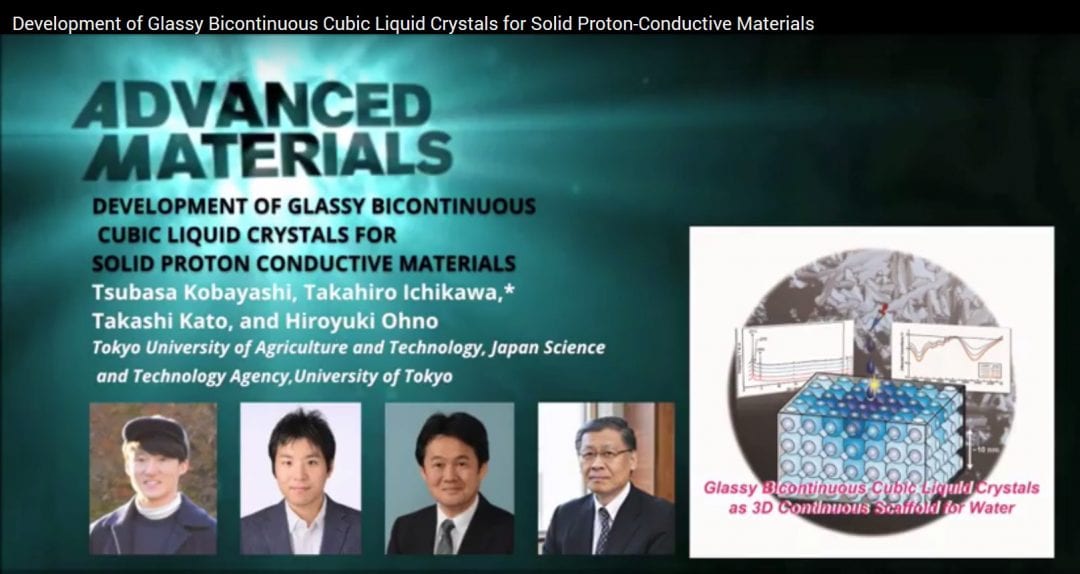Working alone is often slower and less efficient than the cooperative effect of a team.
This line of reasoning also applies to proton conduction in electric devices. Vehicle proton conduction by diffusing hydronium ions is much slower than the proton-hopping conduction via hydrogen bonding networks of water molecules.
In their recent communication in Advanced Materials, Takahiro Ichikawa and co-workers from the Tokyo University of Agriculture and Technology, Japan Science and Technology Agency, and The University of Tokyo developed solid proton conductive materials by water adsorption to glassy bicontinuous cubic liquid crystals. The right three dimensional scaffold was crucial to this discovery and was studied by adjusting the phase transition of liquid crystals.
“An infinite periodic minimal surface is a unique surface exhibiting three-dimensional periodicity and three-dimensional continuity. Basically, we have focused on these structures for the construction of three-dimensional proton conduction pathways. In the present study, we control the self-organizational behavior of amphiphilic zwitterions by adding acid. By using suitably designed acids, bicontinuous cubic liquid crystals showing glass transition were successfully obtained.”
Supposedly, glassification is favored over crystallization, when the ionic domains freeze before the hydrophobic alkyl-chain domains can crystallize.
Upon cooling from isotropic liquid states, beautiful birefringe patterns are observed, which indicate the formation of a columnar liquid-crystalline phase. It turns into a bicontinuous cubic phase upon further cooling, which is shown in black. The bicontinuous cubic liquid crystals turn into glass state, which was confirmed by differential scanning calorimetry. X-ray diffraction proves that the 3D periodicity is maintained. Ion conductivity relies on temperature-independent proton hopping in the glass state. Infrared spectroscopy shows rapid water adsorption in the glassy sample core that quickly and immensely increases conductivity—by a factor of six. This novel approach will allow for the construction of solid proton conductive materials with high mechanical stability and high ionic conductivity.
This is a transcript of a video abstract that you can watch here.
To find out more, please visit the Advanced Materials homepage.

















